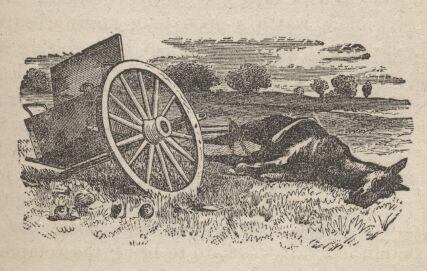The Central Overland Route (also known as the "Central Overland Trail", "Central Route", "Simpson's Route", or the "Egan Trail") was a transportation route from Salt Lake City, Utah south of the Great Salt Lake through the mountains of central Nevada to Carson City, Nevada. For a decade after 1859, until the first Transcontinental Railroad was completed in 1869, it served a vital role in the transport of emigrants, mail, freight, and passengers between California, Nevada, and Utah.
The route was initially scouted in 1855 by Howard Egan, and used by him to drive livestock between Salt Lake City and California. The trail Egan used led straight through the high mountain ranges that most earlier explorers had worked so hard to avoid.
Egan had discovered a series of mountain passes and mountain springs that aligned to allow an almost straight path across the middle of Utah and Nevada. The Schell Creek Range could be crossed at Schellbourne Pass, the Cherry Creek Range at Egan Canyon, the Ruby Mountains at Overland Pass, the Diamond Mountains at another Overland Pass, the Toiyabe Range at Emigrant Pass, and the Desatoya Mountains at Basque Summit (all of these place names came later).
Although many smaller ranges and two large deserts also had to be traversed, the reduction in length over the "standard" California Trail route along the Humboldt River by about 280 miles (450 km) made this route about two weeks faster for emigrants getting to (or from) California. After it was developed many California emigrants and returning emigrants used this route.
Wednesday, Aug. 7, 1861. Bathed in the warm spring. Mountains in the morning, Southwest and East enveloped in clouds. [Clemens]
Thursday, Aug. 8.—Arrived at Fort Crittenden—(Camp Floyd) 8 A.M., 45 miles from Salt Lake City.
Burton departs Salt Lake City September 20, 1860:1. Road through the south of the city, due south along the right bank of the Jordan. Cross many creeks. 2. viz Kanyon Creek 4 1/2 miles; Mill Creek 2 1/2; First or Great Cottonwood Creek 2; Second ditto 4 ;Fork of road 1 1/2; Dry Creek 3 1/2; Willow Creek 2 After 22-23 miles, hot and cold springs, and (Joe's Dugout Station). Road across Ash Hollow or Jordan Kanyon 2 miles.Fords river, knee deep, ascends a rough divide between Utah Valley and Cedar Valley 10 miles from camp, and finally reaches Cedar Creek and Camp Floyd.
The accustomed coach life began again, now, and by midnight it almost seemed as if we never had been out of our snuggery among the mail sacks at all. We had made one alteration, however. We had provided enough bread, boiled ham and hard boiled eggs to last double the six hundred miles of staging we had still to do.
And it was comfort in those succeeding days to sit up and contemplate the majestic panorama of mountains and valleys spread out below us and eat ham and hard boiled eggs while our spiritual natures revelled alternately in rainbows, thunderstorms, and peerless sunsets. Nothing helps scenery like ham and eggs. Ham and eggs, and after these a pipe—an old, rank, delicious pipe—ham and eggs and scenery, a “down grade,” a flying coach, a fragrant pipe and a contented heart—these make happiness. It is what all the ages have struggled for. (Roughing It)
"At eight in the morning we reached the remnant and ruin of what had been the important military station of “Camp Floyd,” some forty-five or fifty miles from Salt Lake City.
Roughing It
After Secretary of War Floyd resigned on Dec. 29, 1860 (becoming a Confederate), Camp Floyd was renamed Fort Crittenden, after Kentucky's Senator John J Crittenden, who worked to prevent Kentucky's secession from the Union. Camp Floyd/Crittenden was abandoned in July 1861 with the military being called east for the American Civil War. Equipment and buildings were sold, destroyed or transported. All that remain today are the military cemetery and one commissary building. Two months after the army's departure, only 18 families remained in Fairfield.
